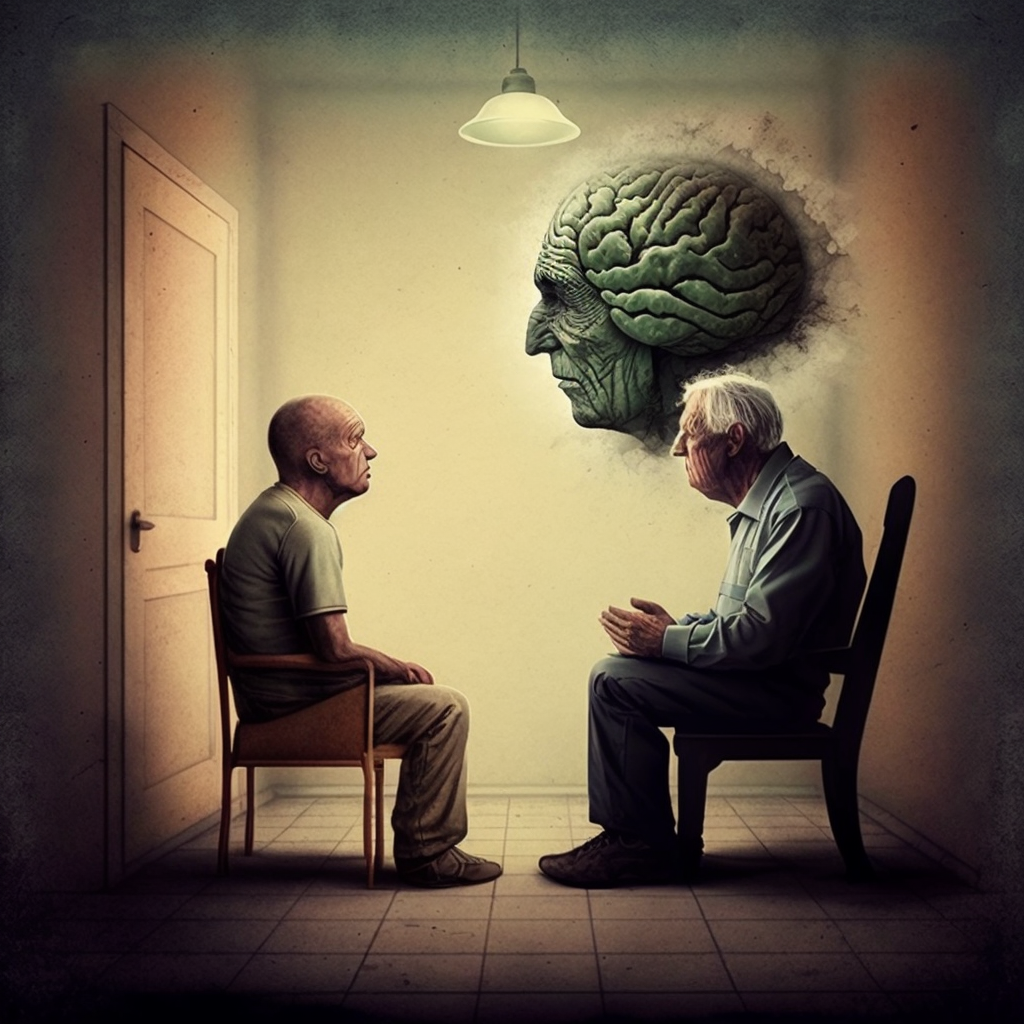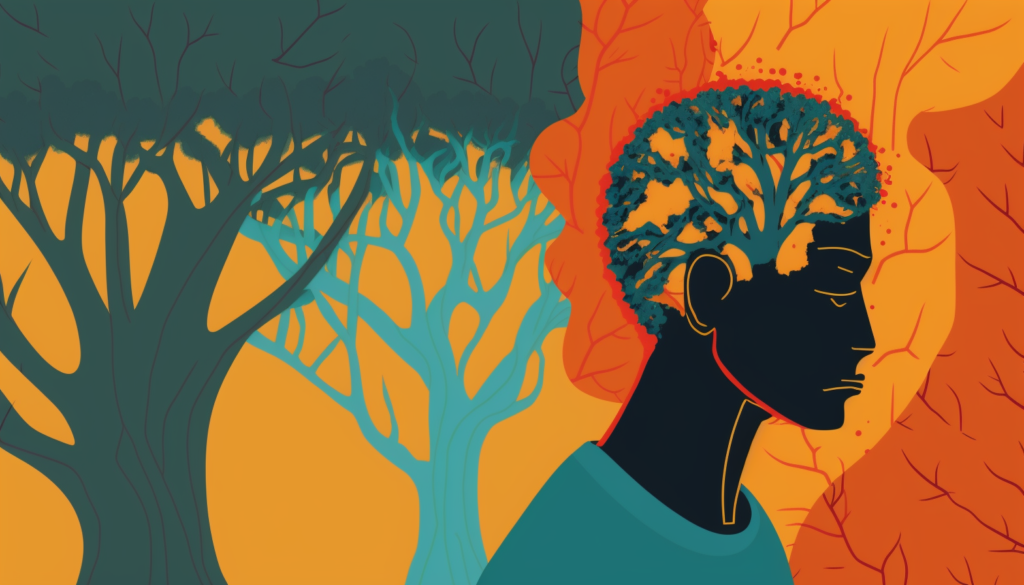Introduce the topic of PTSD and its prevalence in society.
Post-traumatic stress disorder (PTSD) is a mental health condition that can develop after experiencing or witnessing a traumatic event. Traumatic events can include experiences such as military combat, sexual or physical assault, natural disasters, or serious accidents. PTSD can cause a range of symptoms, such as flashbacks, nightmares, avoidance, and hyperarousal, that can significantly impact a person’s daily life. PTSD is a prevalent condition in society, with an estimated 7-8% of the population experiencing it at some point in their lives. PTSD can affect anyone, regardless of age, gender, or background, and it is essential to seek help and support if you or someone you know is struggling with this condition.
Some statistics or facts to highlight the seriousness of the condition.
Here are some statistics and facts that highlight the seriousness of PTSD:

- According to the National Center for PTSD, about 60% of men and 50% of women experience at least one traumatic event in their lives.
- Approximately 7-8% of the US population will experience PTSD at some point in their lives, according to the US Department of Veterans Affairs.
- PTSD can occur at any age, including childhood, and can develop weeks, months, or even years after a traumatic event.
- Individuals with PTSD have a higher risk of developing other mental health conditions, such as depression, anxiety, and substance abuse.
- PTSD is associated with a higher risk of physical health problems, including cardiovascular disease, chronic pain, and autoimmune disorders.
- The suicide rate is higher among individuals with PTSD than in the general population, and veterans with PTSD have a particularly high risk of suicide.
- PTSD can affect not only the individual but also their family and social relationships, work, and daily functioning.
These statistics and facts underscore the seriousness and impact of PTSD on individuals, families, and communities and emphasize the need for increased awareness, understanding, and effective treatments.
Define PTSD and explain what causes it.
Post-traumatic stress disorder (PTSD) is a mental health condition that can develop after experiencing or witnessing a traumatic event. Trauma can be defined as an event that involves actual or threatened death, serious injury, or sexual violence. Examples of traumatic events include military combat, sexual or physical assault, natural disasters, serious accidents, or the sudden death of a loved one.

PTSD develops when the person is unable to cope with the traumatic event and experiences a range of symptoms that persist long after the event has ended. The traumatic experience can cause changes in the brain and the body, which may contribute to the development of PTSD symptoms. These changes can include alterations in brain chemistry and function, as well as changes in stress hormones such as cortisol and adrenaline.
The exact causes of PTSD are not fully understood, but it is believed to be a complex interaction between biological, psychological, and social factors. Some risk factors for developing PTSD include having a history of trauma or abuse, having a family history of mental health conditions, and having a lack of social support. Additionally, the severity and duration of the traumatic event can also impact the likelihood of developing PTSD.
The symptoms of PTSD, including both physical and psychological symptoms.
PTSD can cause a range of physical and psychological symptoms, which can vary in severity and may develop weeks, months, or even years after the traumatic event. The symptoms can be grouped into four categories:
- Intrusive Thoughts and Memories: People with PTSD may experience intrusive, distressing thoughts and memories related to the traumatic event. These can manifest as flashbacks, nightmares, or intense and distressing recollections of the event.
- Avoidance: PTSD can also cause avoidance behavior, where individuals go to great lengths to avoid anything that reminds them of the traumatic event. This can include avoiding certain people, places, or activities that may trigger memories of the event.
- Negative Alterations in Mood and Cognition: PTSD can cause negative changes in a person’s mood and cognitive processes, which can lead to feelings of guilt, shame, or blame. This can result in persistent negative thoughts and beliefs about oneself, others, or the world around them.
- Hyperarousal: PTSD can also cause hyperarousal, where individuals experience intense emotional and physical reactions to stimuli that remind them of the traumatic event. These can include irritability, angry outbursts, difficulty sleeping, and an exaggerated startle response.
Some of the physical symptoms of PTSD can include headaches, chronic pain, gastrointestinal issues, and increased risk of heart disease. It is essential to seek help and support if you or someone you know is experiencing any of these symptoms, as PTSD can significantly impact a person’s daily life and well-being. A mental health professional can diagnose PTSD and provide effective treatments, such as therapy and medication, that can help manage the symptoms and improve overall quality of life.
Risk factors that can make someone more susceptible to developing PTSD, such as experiencing trauma or having a history of mental health issues.
PTSD can affect anyone who experiences or witnesses a traumatic event, but some individuals may be at higher risk of developing the disorder. Here are some common risk factors that can make someone more susceptible to developing PTSD:

- Previous Trauma or Adverse Life Experiences: Having a history of trauma or adverse life experiences, such as abuse or neglect, can increase the risk of developing PTSD.
- Severity of the Traumatic Event: The severity of the traumatic event can also impact the likelihood of developing PTSD. Traumatic events that involve physical harm, threat of death, or sexual violence can be more likely to cause PTSD than events that are less severe.
- Lack of Social Support: Individuals who lack social support or who experience a lack of support from friends and family after a traumatic event may be at higher risk of developing PTSD.
- Pre-existing Mental Health Issues: Individuals with pre-existing mental health conditions, such as depression or anxiety, may be more susceptible to developing PTSD after a traumatic event.
- Genetic Predisposition: Research suggests that genetic factors may play a role in the development of PTSD, with some individuals being more genetically susceptible to developing the disorder.
- Neurobiological Factors: Changes in brain function and structure, such as alterations in brain chemistry and the stress response system, may contribute to the development of PTSD.
It is important to note that having one or more of these risk factors does not necessarily mean that someone will develop PTSD after a traumatic event. However, being aware of these risk factors can help individuals and their loved ones understand their risk and take proactive steps to manage and reduce the likelihood of developing the disorder. Seeking professional help and support after a traumatic event can also reduce the risk of developing PTSD or mitigate its impact.
Mention some groups that may be at higher risk for PTSD, such as military veterans and survivors of abuse or violence.
There are certain groups that may be at a higher risk of developing PTSD due to exposure to specific types of trauma. Here are some examples of these high-risk groups:
- Military Veterans: Military personnel who have been exposed to combat situations, witnessing or experiencing violence, and other types of trauma while on active duty may be at higher risk of developing PTSD.
- Survivors of Abuse or Violence: Individuals who have experienced physical or sexual abuse, domestic violence, or sexual assault are at higher risk of developing PTSD.
- Emergency First Responders: First responders, such as police officers, firefighters, and emergency medical technicians, may be at higher risk of developing PTSD due to their frequent exposure to traumatic events.
- Medical Professionals: Medical professionals who frequently witness traumatic events or work with critically ill or injured patients may be at higher risk of developing PTSD.
- Displaced Persons: Individuals who have been displaced due to conflict, natural disasters, or political instability may be at higher risk of developing PTSD due to the stressful and traumatic nature of their experiences.
It is important to note that these groups are not exhaustive, and anyone who has experienced a traumatic event can develop PTSD. However, understanding the specific risk factors associated with each group can help identify those who may be at a higher risk and provide targeted support and resources to help them manage and recover from their experiences.
The process of diagnosing PTSD, including psychological assessments and evaluations.
The process of diagnosing PTSD typically involves a comprehensive psychological evaluation that assesses a person’s symptoms, medical history, and exposure to trauma. Here are the key steps in the diagnostic process:

- Medical and Psychiatric Evaluation: A medical and psychiatric evaluation is usually the first step in the diagnostic process. A healthcare provider will conduct a physical exam and review the patient’s medical history to rule out any physical or medical conditions that may be causing the symptoms.
- Psychological Assessment: A psychological assessment is usually performed by a mental health professional, such as a psychiatrist or psychologist. The assessment includes a clinical interview, which is a conversation between the clinician and the patient that aims to evaluate the patient’s symptoms and determine whether they meet the criteria for PTSD.
- Diagnostic Criteria: The diagnostic criteria for PTSD are outlined in the Diagnostic and Statistical Manual of Mental Disorders (DSM-5). To receive a diagnosis of PTSD, a patient must meet the criteria outlined in the DSM-5. These criteria include exposure to a traumatic event, persistent re-experiencing of the trauma, avoidance of stimuli related to the trauma, and symptoms of hyperarousal and negative mood.
- Additional Assessments: In some cases, additional assessments may be necessary to rule out other mental health conditions or to assess the severity of the symptoms. These may include psychological tests and assessments, such as the Clinician-Administered PTSD Scale (CAPS) or the PTSD Checklist for DSM-5 (PCL-5).
- Treatment Planning: Once a diagnosis of PTSD has been made, a treatment plan can be developed. This may include a combination of therapies, such as cognitive-behavioral therapy, eye movement desensitization and reprocessing (EMDR), and medication.
It’s important to note that diagnosing PTSD can be complex, and not all individuals who have experienced trauma will develop the disorder. Seeking help from a mental health professional with expertise in PTSD is essential to ensure an accurate diagnosis and effective treatment plan.
Various treatment options for PTSD, such as therapy (e.g., cognitive behavioral therapy, exposure therapy) and medication (e.g., antidepressants).
There are several evidence-based treatments available for PTSD, including psychotherapy and medication. Here are some of the most commonly used treatments:
- Cognitive Behavioral Therapy (CBT): CBT is a type of talk therapy that aims to change the negative thought patterns and behaviors that are associated with PTSD. It involves working with a therapist to identify and challenge negative beliefs and thought patterns and develop coping strategies to manage symptoms.
- Exposure Therapy: Exposure therapy involves gradually and safely exposing the individual to the trauma they experienced, either through in-vivo or imaginal exposure. The aim is to help the individual process and reframe the trauma and reduce the symptoms associated with it.
- Eye Movement Desensitization and Reprocessing (EMDR): EMDR is a form of therapy that involves reprocessing traumatic memories through a series of eye movements or other types of bilateral stimulation. The goal is to reduce the emotional distress associated with the traumatic event and promote healing.
- Medication: Medications such as antidepressants (such as selective serotonin reuptake inhibitors, or SSRIs) may be prescribed to help manage symptoms such as anxiety and depression. Other medications, such as prazosin, may be prescribed to help reduce nightmares and improve sleep.
- Group Therapy: Group therapy can be helpful for those with PTSD by providing a supportive environment and the opportunity to connect with others who have had similar experiences.
- Self-Help Strategies: Self-help strategies such as mindfulness, exercise, and creative expression can also be helpful in managing symptoms of PTSD.
It’s important to note that not all treatments work for everyone, and treatment may need to be tailored to each individual’s needs. A combination of treatments may also be recommended to address multiple symptoms and needs. It’s crucial for those experiencing symptoms of PTSD to seek professional help from a qualified mental health professional to determine the best course of treatment.
Mention alternative treatments that may be helpful, such as meditation or yoga.
In addition to traditional treatment approaches like therapy and medication, there are several alternative treatments that may be helpful for individuals with PTSD. Here are a few examples:
- Mindfulness-Based Interventions: Mindfulness-based interventions, such as mindfulness-based stress reduction (MBSR) and mindfulness-based cognitive therapy (MBCT), have been shown to be effective in reducing symptoms of PTSD. These interventions involve training the individual to be more present and aware of their thoughts and feelings, which can help them better manage their symptoms.
- Yoga: Yoga has been shown to be effective in reducing symptoms of anxiety, depression, and PTSD. The practice of yoga involves physical postures, breathing exercises, and meditation, which can help individuals learn to regulate their emotions and reduce stress.
- Acupuncture: Acupuncture, a traditional Chinese medicine practice, involves inserting thin needles into specific points on the body. Some studies have suggested that acupuncture may be helpful in reducing symptoms of anxiety, depression, and PTSD.
- Animal-Assisted Therapy: Animal-assisted therapy involves working with animals, such as dogs or horses, to improve emotional and psychological well-being. This therapy can help individuals with PTSD feel more calm, relaxed, and supported.
- Art Therapy: Art therapy involves using creative expression, such as drawing, painting, or sculpture, as a way to process emotions and reduce stress. It can be particularly helpful for individuals who have difficulty expressing their emotions verbally.
It’s important to note that while these alternative treatments may be helpful for some individuals, they are not a substitute for professional medical or psychiatric care. It’s essential to work with a qualified mental health professional to determine the best course of treatment for PTSD.
Strategies that people with PTSD can use to cope with their symptoms, such as developing a support system and practicing self-care.
In addition to seeking professional help and receiving treatment, there are several strategies that individuals with PTSD can use to cope with their symptoms. Here are a few examples:

- Develop a Support System: It’s important for individuals with PTSD to have a supportive network of friends and family who can provide emotional support and understanding. Joining a support group or seeking out online communities can also be helpful in connecting with others who have similar experiences.
- Practice Self-Care: Self-care activities, such as exercise, healthy eating, getting enough sleep, and practicing relaxation techniques (such as deep breathing, meditation, or yoga), can help reduce stress and manage symptoms of PTSD.
- Avoid Triggers: Individuals with PTSD should try to avoid situations that trigger their symptoms, such as loud noises, crowded spaces, or situations that remind them of the traumatic event.
- Keep a Routine: Maintaining a daily routine can provide structure and stability, which can be helpful for individuals with PTSD. This may include going to bed and waking up at the same time each day, scheduling regular meals and exercise, and setting aside time for relaxation and self-care.
- Stay Present: Individuals with PTSD may find themselves stuck in memories of the traumatic event or worried about the future. Practicing mindfulness techniques, such as focusing on the present moment or engaging in activities that require full attention, can help reduce anxiety and improve mood.
- Seek Professional Help: Individuals with PTSD should work with a qualified mental health professional to develop a treatment plan that works best for them. This may include a combination of therapies, medication, and alternative treatments.
It’s important to note that coping strategies may vary depending on the individual’s needs and preferences. It’s essential to work with a mental health professional to develop a plan that is tailored to the individual’s specific symptoms and needs.
Provide tips for loved ones of someone with PTSD on how to be supportive and understanding.
If you have a loved one with PTSD, it’s important to understand that the condition can be challenging to live with. Here are some tips on how you can be supportive and understanding:
- Educate Yourself: Learn as much as you can about PTSD, including its causes, symptoms, and treatment options. This can help you better understand what your loved one is going through and how to provide support.
- Listen and Be Understanding: Be there to listen when your loved one wants to talk about their experiences, but don’t pressure them to share if they’re not ready. Try to be patient and understanding, and avoid minimizing or dismissing their feelings.
- Offer Practical Help: Offer practical help, such as running errands or helping with household chores, if your loved one is struggling to manage daily tasks. This can help reduce stress and allow them to focus on their recovery.
- Be Patient: Recovery from PTSD can be a long and challenging process, and there may be setbacks along the way. Be patient and understanding, and avoid putting pressure on your loved one to “get better” quickly.
- Encourage Treatment: Encourage your loved one to seek professional help and support their treatment plan. Offer to help with appointments or transportation, and be there to provide emotional support and encouragement.
- Take Care of Yourself: Caring for a loved one with PTSD can be emotionally and physically demanding. Make sure to take care of your own needs, such as practicing self-care and seeking support from your own friends and family.
It’s important to remember that supporting someone with PTSD can be challenging, and it’s okay to seek help and support for yourself as well. If you’re struggling to provide the support your loved one needs, consider seeking guidance from a mental health professional or a support group.
Sum up the key points of the post and emphasize the importance of seeking help for PTSD.
In summary, post-traumatic stress disorder (PTSD) is a mental health condition that can develop after a person experiences or witnesses a traumatic event. It can cause a range of physical and psychological symptoms, including flashbacks, nightmares, anxiety, and depression. PTSD can affect anyone, but some groups, such as military veterans and survivors of abuse or violence, may be at a higher risk.
Fortunately, there are effective treatment options for PTSD, such as therapy and medication, and alternative treatments like meditation or yoga may also be helpful. Coping strategies, such as developing a support system, practicing self-care, avoiding triggers, keeping a routine, and seeking professional help, can also be helpful.
It’s important to emphasize the importance of seeking help for PTSD. The longer PTSD goes untreated, the more difficult it can be to manage. If you or someone you know is experiencing symptoms of PTSD, it’s important to seek professional help from a mental health provider. Early intervention and treatment can lead to better outcomes and an improved quality of life. It’s also important for loved ones to be supportive and understanding, and to encourage their loved one to seek treatment and provide practical help and emotional support throughout the recovery process.

